Frangula purshiana (DC.) J. G. Cooper |
| |
|
|
Botanical Name |
: |
Frangula purshiana (DC.) J. G. Cooper |
English
Name |
: |
Cascara buckthorn |
Synonym(s) |
: |
Rhamnus purshianaNorthern Africa, most of Europe, the Caucasus, and into Siberia DC. |
Family |
: |
Rhamnaceae |
| |
General Info
| Description |
 |
|
A large shrub or small tree 5-10 m tall, with a trunk 20-50 cm in diameter. The bark is brownish to silver-grey with light splotching. The leaves are deciduous, alternate, clustered near the ends of twigs; they are oval, 5-15 cm long and 2-5 cm broad with a 0.6-2 cm petiole, dark shiny green on top, fuzzy and paler green below. The flowers are tiny, 4-5 mm diameter, with five greenish yellow petals; the flowering season is brief, disappearing by early summer. The fruit is a berry 6-10 mm diameter, bright red at first, quickly maturing deep purple or black, and containing three seeds. |
| Herb Effects |
 |
|
Antibacterial, antiherpetic, antileukemic, antispasmodic, depurative, diuretic, emetic, hepatotonic, laxative, peristaltic and prostaglandigenic. |
Chemistry
| Active Ingredients |
 |
|
Aloe-emodin, ascorbic acid, barbaloin, beta-carotene, frangulin, niacin, riboflavin, thiamin (bark); aloin, chrysophanic acid, chrysophanol, linoleic acid, malic acid, myristic acid, tannic acid, tannin (plant) |
| Chemistry
of Active Ingredients |
 |
|
|
 |
Name |
CAS# |
IUPAC Name |
Formula |
Structure |
 |
|
| Aloe-emodin |
481-72-1 |
1,8-dihydroxy-3-(hyd
roxymethyl)anthracen
e-9,10-dione |
C15H10O5 |
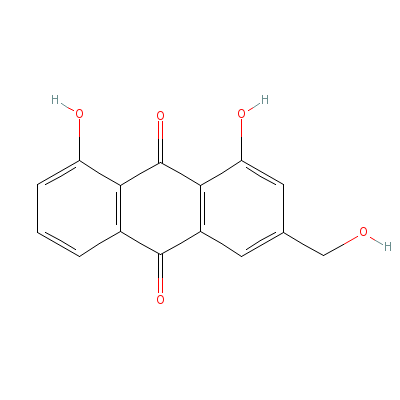
|
| Ascorbic Acid |
Not Available |
2-(1,2-dihydroxyethy
l)-4,5-dihydroxy-fur
an-3-one |
C6H8O6 |

|
| Barbaloin |
5133-19-7 |
(10R)-1,8-dihydroxy-
3-(hydroxymethyl)-10
-[(2S,3S,4R,5R,6R)-3
,4,5-trihy
droxy-6-
(hydroxymethyl)oxan-
2-yl]-10H-anthracen-
9-one |
C21H22O9 |
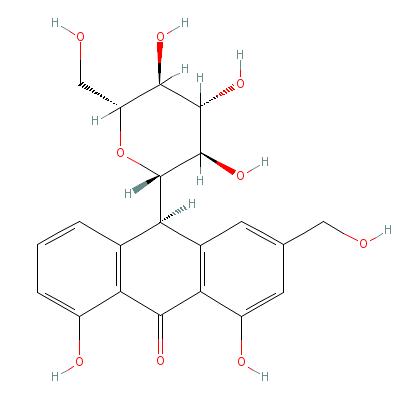
|
| beta Carotene |
7235-40-7 |
3,7,12,16-tetramethy
l-1,18-bis(2,6,6-tri
methyl-1-cyclohexeny
l)-octadec
a-1,3,5,
7,9,11,13,15,17-nona
ene |
C40H56 |

|
| Frangulin |
Not Available |
1,8-dihydroxy-3-meth
yl-6-(3,4,5-trihydro
xy-6-methyl-oxan-2-y
l)oxy-anth
racene-9
,10-dione |
C21H20O9 |
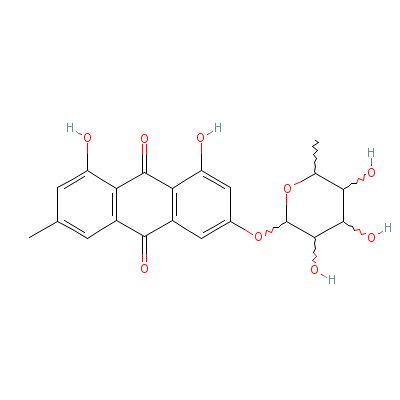
|
| Niacin |
99148-57-9 |
Pyridine-3-carboxyli
c acid |
C6H5NO2 |
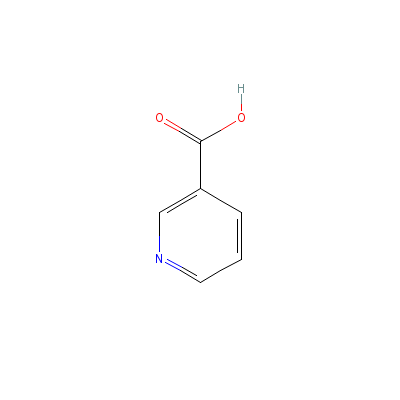
|
| Riboflavin |
Not Available |
Not Available |
C17H21N4O9P |
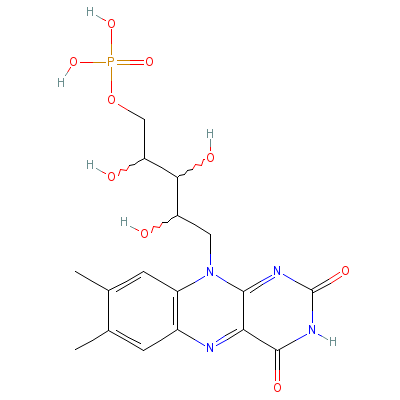
|
| Thiamin |
59-43-8 |
2-[3-[(4-amino-2-met
hyl-pyrimidin-5-yl)m
ethyl]-4-methyl-1-th
ia-3-azoni
acyclope
nta-2,4-dien-5-yl]et
hanol |
C12H17N4OS+ |

|
| Aloin |
20226-90-8 |
1,8-dihydroxy-3-(hyd
roxymethyl)-10-[3,4,
5-trihydroxy-6-(hydr
oxymethyl)
oxan-2-y
l]-10H-anthracen-9-o
ne |
C21H22O9 |
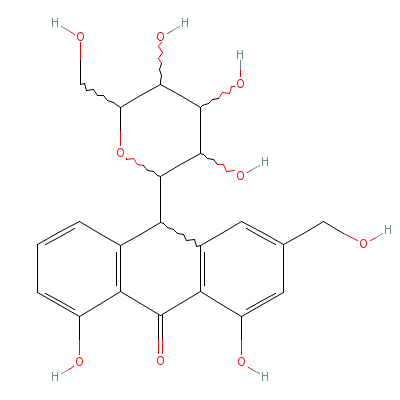
|
| Chrysophanic acid |
Not Available |
1,8-dihydroxy-3-meth
yl-anthracene-9,10-d
ione |
C15H10O4 |

|
| Chrysophanol |
481-74-3 |
1,8-dihydroxy-3-meth
yl-anthracene-9,10-d
ione |
C15H10O4 |
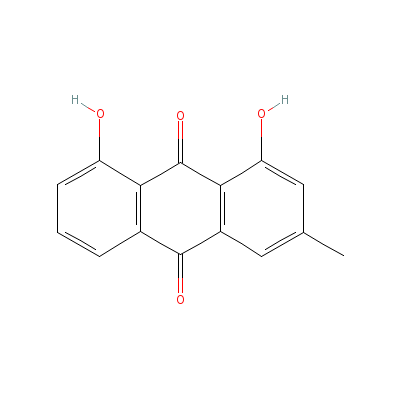
|
| Linoleic acid |
8024-22-4 |
Octadeca-9,12-dienoi
c acid |
C18H32O2 |
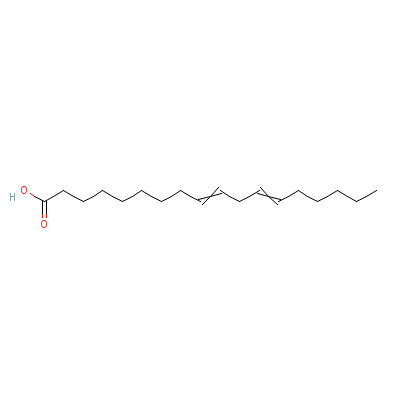
|
| Malic acid |
Not Available |
2-hydroxybutanedioic
acid |
C4H6O5 |
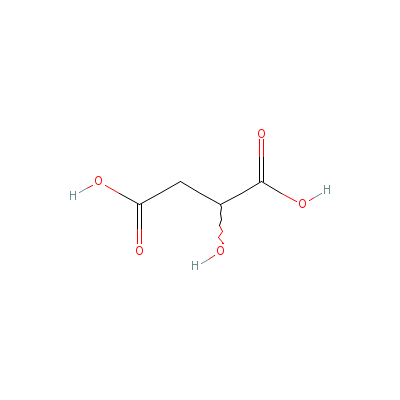
|
| Myristic Acid |
Not Available |
Hexane |
C6H14 |

|
| Tannic acid |
1401-55-4 |
Not Available |
Not Available |

|
| Tannin |
1401-55-4 |
Not Available |
C27H22O18 |
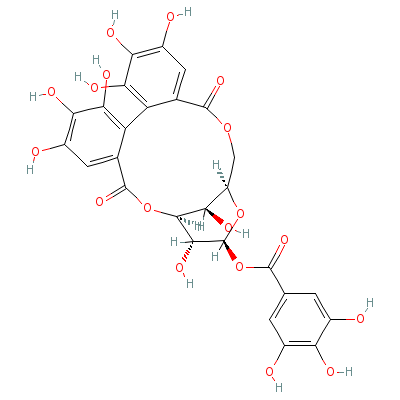
|
|
Pharmacology
| Medicinal Use |
 |
|
Very useful in cases of chronic constipation, digestive complaints, haemorrhoids, liver problems and jaundice. |
| Contraindication |
 |
|
Contraindicated for pregnant or lactating women or patients with intestinal obstruction. |
Dealers
Products
|
|